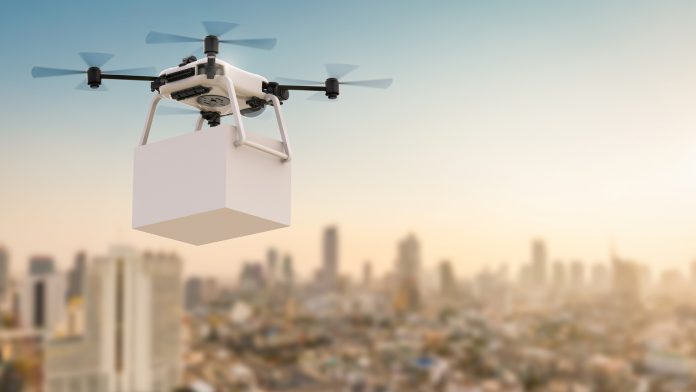
Researchers analysed whether drone delivery is an efficient method of delivering COVID-19 tests to limit contact between the public.
Texas A&M University School of Public Health researchers have developed a new COVID-19 test delivery method which employs drones to distribute diagnostic tests to potentially infectious individuals.
The COVID-19 pandemic highlighted the importance of controlling the spread of infectious diseases to reduce transmission. Moreover, the pandemic emphasised the requirement of distancing and limiting contact between people with a suspected case of COVID-19 and healthcare workers administering COVID-19 tests. Home testing has allowed people to get an accurate diagnosis without putting others at risk, and drone deliveries mitigate delivery challenges. Antigen COVID-19 tests are typically used at home as they can provide results within 30-minutes.
The findings were published in the Journal of Intelligent & Robotic Systems.
Delivering COVID-19 tests with drones
Murray Côté, Associate Professor at the Texas A&M School of Public Health, and colleagues from the University of Houston have developed an innovative technique that involves scheduling the delivery of COVID-19 tests using a truck to dispatch the drones to deliver the tests. To test the efficacy, the researchers tested various scenarios.
Côté and colleagues optimised the truck schedule to minimise travel distance and then performed the same action on the drone delivery times. The first stage of their proposal focuses on sourcing suitable truck and drone routes. The second stage uses a heuristic algorithm – trying ideal combinations of driving routes to find improvements to their initial solution.
They used a real-world scenario to find an effective routing schedule within approximately one hour of computing time. The researchers developed a method to showcase the effectiveness of delivery based on multiple factors: time needed to complete the deliveries, the number of people involved in the process, and the virus transmission rate compared to face-to-face COVID-19 testing.
When accounting for all the factors, the researchers concluded that the drone delivery method could reduce transmission during COVID-19 testing by a factor of 7.5. For example, if the rate of transmission was 100 per day, the proposed research has the potential to reduce this rate to 13.3 per day.
The future direction of drone delivery
The study demonstrated its ability to easily be used in other applications such as testing for other infectious diseases like influenza. The researchers noted that their model could be used in remote and urban areas. The researchers are looking to adjust their drone delivery routes for driving restrictions like speed limits and traffic lights.








